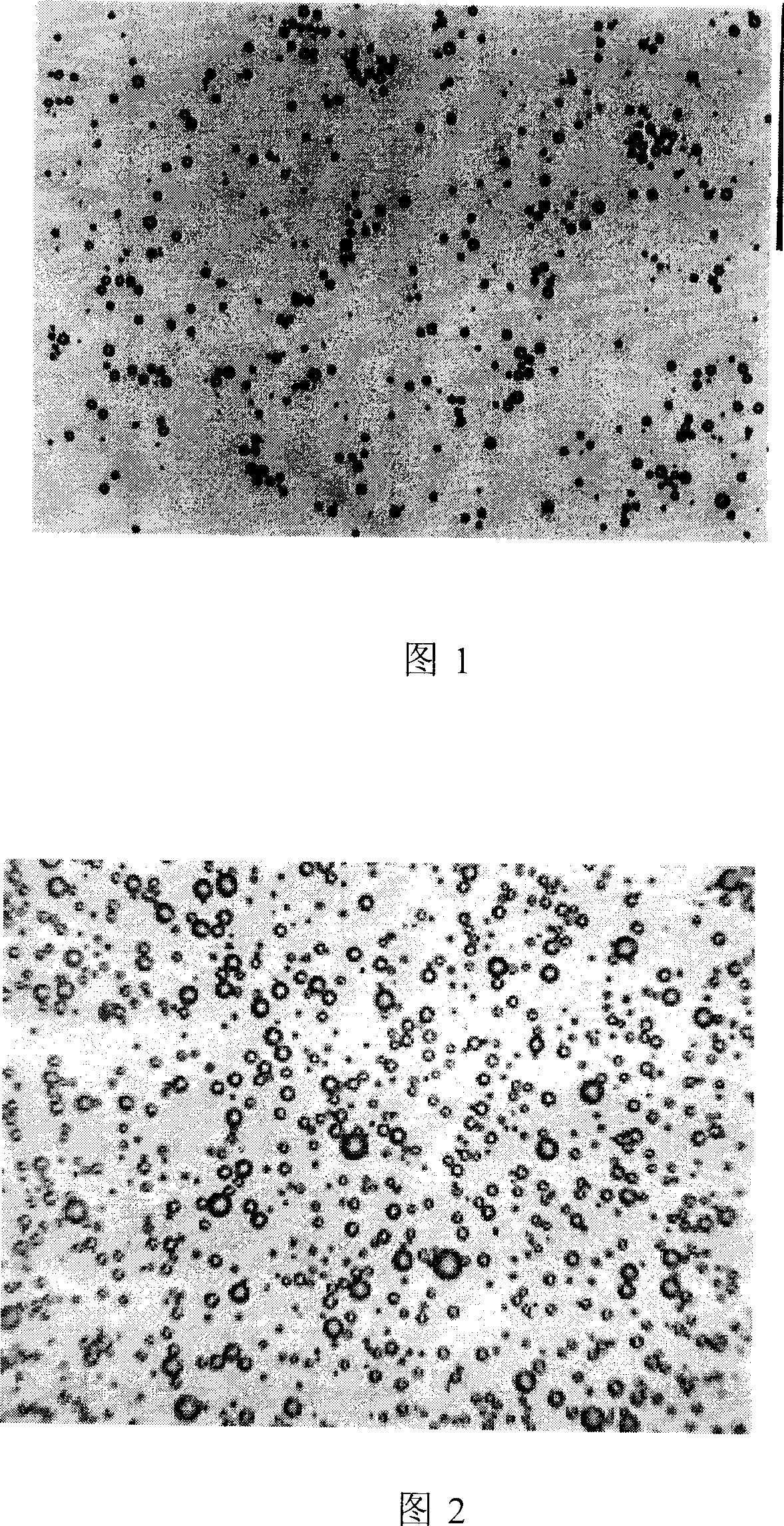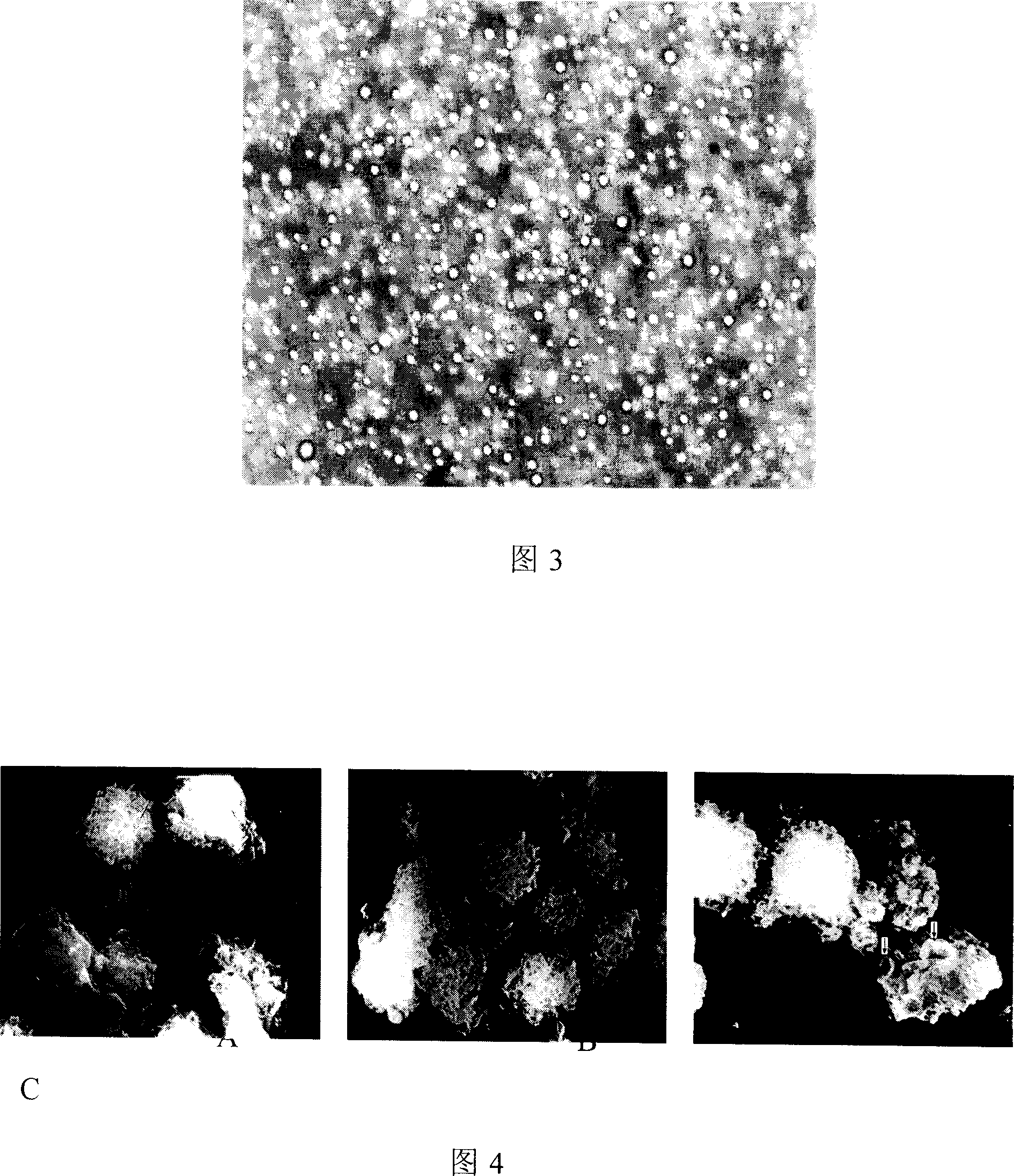Ultrasonic microvesicle as immuno adjuvant and vaccine carrier
A technology of ultrasonic microbubbles and vaccine carriers, applied in the field of biomedical engineering, can solve the problems that it is difficult to meet the needs of the development of new peptide vaccines and fail to stimulate immune responses, achieve safe repeatability, improve nucleic acid expression levels, and target good effect
- Summary
- Abstract
- Description
- Claims
- Application Information
AI Technical Summary
Problems solved by technology
Method used
Image
Examples
example 1
[0017] Example 1: Preparation of Surfactant-like Microbubbles
[0018] Mix the surfactant Span60; Tween 80 in a ratio of 1:1, and at the same time use NaCl:KCl:Na 2 HPO 4 :KH 2 PO 4According to the mass ratio of 200:30:5:1, add 100ml of deionized water, and adjust the pH value of the mixed solution to 7.36 with NaOH, which is used as the medium; add 100ml of the medium into the mixture of Span60 and Tween80, Heat the mixture obtained above on a magnetic stirrer, and heat the temperature to 120°C for 10 minutes, and mix thoroughly to make it a milky suspension system; , add 0.6ml of perfluoropropane gas at a rate of 0.5ml / s; place the probe of the vibrometer at 0.5-2.0cm below the liquid surface for sonic vibration treatment, and vibrate at 30% of the maximum output power for 3 minutes. The emulsified mixed solution after sonication was divided into 3 layers after standing for 35 minutes, and the middle layer was taken out and diluted with phosphate buffer solution to obtai...
example 2
[0019] Example 2: Preparation of Lipid Microvesicles
[0020] Lecithin, cholesterol, polyethylene glycol stearyl ethanolamine were dissolved in chloroform at a mass ratio of 1:3:3, and evaporated in a rotary vacuum to form a film; 0.9% sodium chloride solution, propylene glycol and glycerin (0.9% chlorine Sodium chloride solution: propylene glycol: glycerin = 8:1:1), shake to wash the membrane to form a liposome suspension. Freeze overnight. After thawing, vibrate for 80 s with a vibrometer at 30% of the maximum output power, and at the same time slowly fill in 0.6 ml of perfluoropropane gas below through a three-way tube to form lipid fluorocarbon microbubbles (as shown in Figure 2).
example 3
[0021] Example 3: Preparation of polymer material-polylactic acid / glycolic acid (PLGA) microbubbles
[0022] Add 0.1g of camphor into 20ml of dichloromethane, stir fully to make it completely dissolved; add 1.0g of high molecular material polylactic acid / glycolic acid polymer (PLGA) into the above solution, stir until it is completely dissolved, and then add 5% After 3ml of ammonium chloride is added, vibrate for 40s with a vibrator at 30% of the maximum output power to form a milky white emulsion; add the emulsion to 3% polyvinyl alcohol and homogenize it for 5 minutes, then add 2% isopropanol solution, stirred with a magnetic stirrer at room temperature for 2-5 hours, centrifuged at a high speed for 5 minutes (speed 3000-5000 rpm), repeated 3 times; added 5% mannitol and fully mixed into a milky white solution to obtain PLGA microbubbles (as shown in Figure 3)
PUM
| Property | Measurement | Unit |
|---|---|---|
| Particle size | aaaaa | aaaaa |
Abstract
Description
Claims
Application Information
 Login to View More
Login to View More - R&D
- Intellectual Property
- Life Sciences
- Materials
- Tech Scout
- Unparalleled Data Quality
- Higher Quality Content
- 60% Fewer Hallucinations
Browse by: Latest US Patents, China's latest patents, Technical Efficacy Thesaurus, Application Domain, Technology Topic, Popular Technical Reports.
© 2025 PatSnap. All rights reserved.Legal|Privacy policy|Modern Slavery Act Transparency Statement|Sitemap|About US| Contact US: help@patsnap.com


